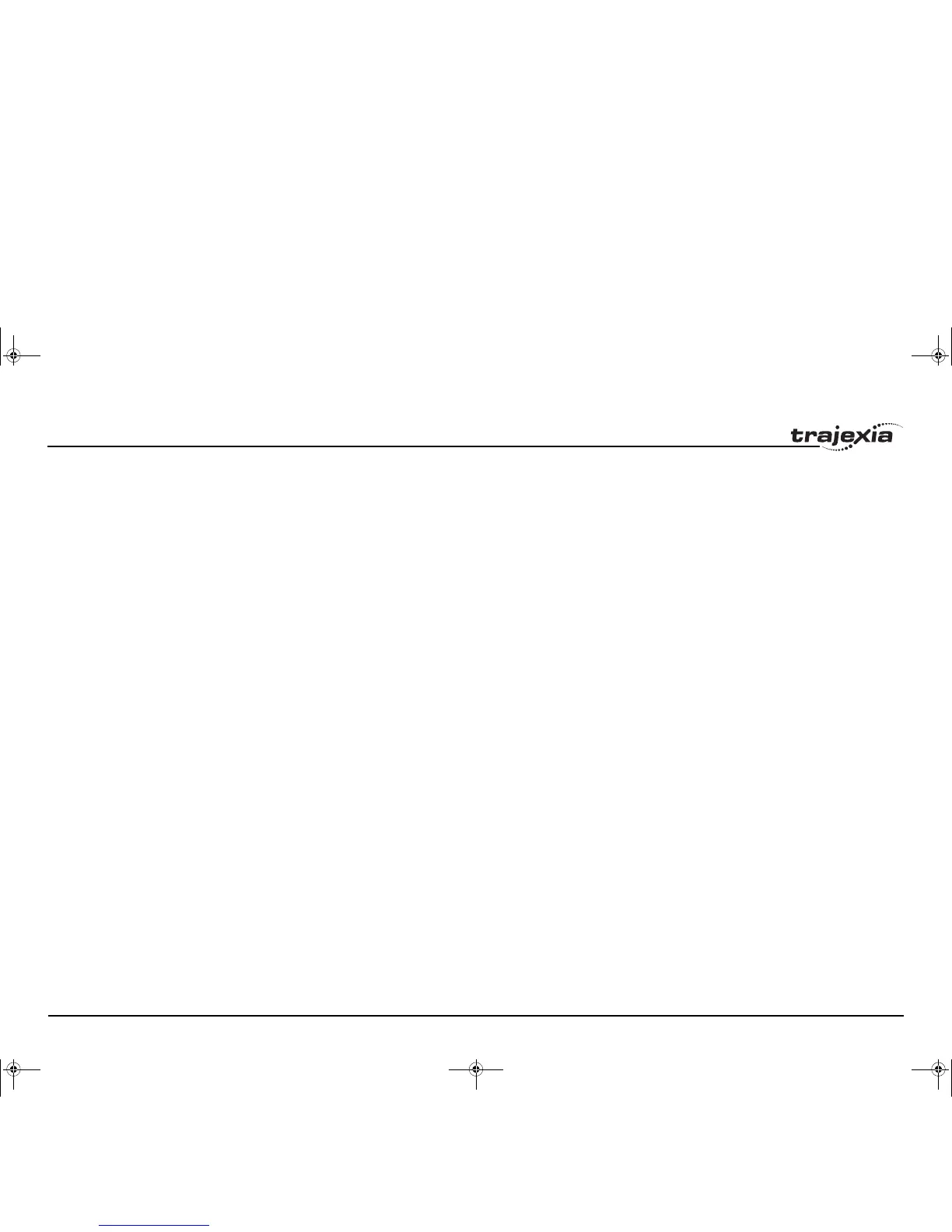BASIC commands
PROGRAMMING MANUAL 132
Revision 3.0
3.2.226 RESET
/i
3.2.227 RETURN
See GOSUB..RETURN.
3.2.228 REV_IN
/i
Description The REPEAT ... UNTIL structure allows the program segment between the
REPEAT and the UNTIL statement to be repeated a number of times until the
condition becomes TRUE.
Note: REPEAT ... UNTIL construct can be nested indefinitely.
Arguments • commands
Any valid set of BASIC commands
• condition
Any valid BASIC logical expression
Example A conveyor is to index 100mm at a speed of 1000mm/s, wait for 0.5s and then
repeat the cycle until an external counter signals to stop by turning on input 4.
cycle:
SPEED = 1000
REPEAT
MOVE(100)
WAIT IDLE
WA(500)
UNTIL IN(4) = ON
See also FOR..TO..STEP..NEXT, WHILE..WEND.
Type System command
Syntax RESET
Description The RESET command sets the value of all local variables of the current
BASIC task to 0.
Arguments N/A
Example No example.
See also CLEAR.
Type Axis parameter
Syntax REV_IN
Description The REV_IN parameter contains the input number to be used as a reverse
limit input. The number can be set from 0 to 7 and 19. The valid input range is
0 to 31. Values 0 to 15 represent physically present inputs of TJ1-MC__ I/O
connector and are common for all axes. Values 16 to 27 represent software
inputs which can be freely used in programs and commands such as IN and
OP. These are also common for all axes. Values 28 to 31 are directly mapped
to driver inputs present on CN1 connector, and they are unique for each axis.
Which driver inputs are mapped to inputs 28 to 31 depends on Servo Driver
parameter Pn81E setting. Recommended setting is Pn81E = 0x4321, with the
following mapping.
If an input number is set and the limit is reached, any reverse motion on that
axis will be stopped. Bit 5 of the AXISSTATUS axis parameter will also be set.
Note: This input is active low.
Sigma II • input 28: CN1-40
• input 29: CN1-41
• input 30: CN1-42
• input 31: CN1-43
Sigma III • input 28: CN1-13
• input 29: CN1-7
• input 30: CN1-8
• input 31: CN1-9
Junma • input 26: CN1-2
• input 27: CN1-1
Arguments N/A
Example No example.
See also AXIS, AXISSTATUS, FWD_IN.
I52E-EN-03.book Seite 132 Freitag, 29. Juni 2007 11:55 11
